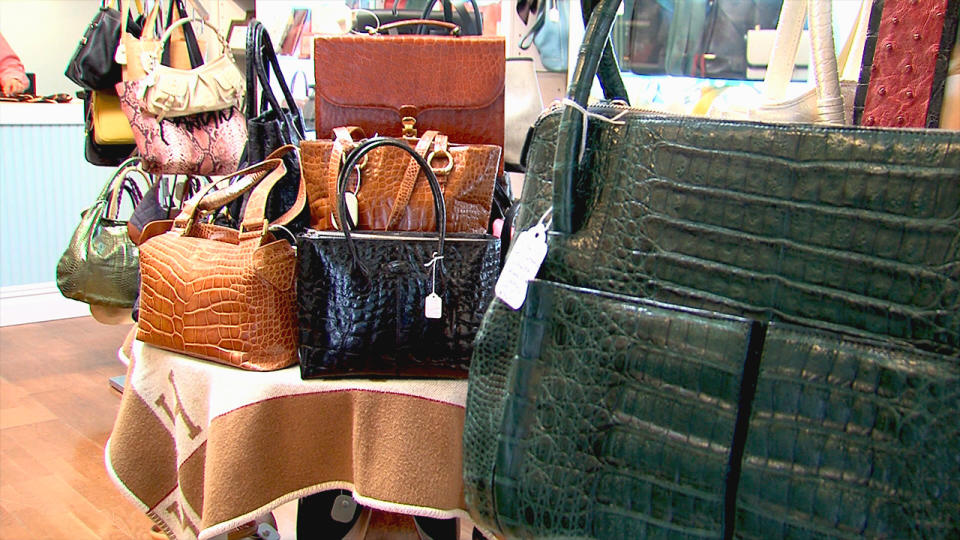How to make money in second-hand selling

Paul Deane started out scouring online classifieds when he was working as a photographer and needed access to affordable, professional lenses. The Abbotsford, B.C. resident quickly developed a knack for buying and selling and went on to wheel and deal online full-time.
“The Canon EOS lens collection costs thousands of dollars, and unless you’re a super, ridiculously successful photographer and you want to try all these lenses, you buy lenses, use them, sell them, and trade them on eBay,” Deane says. “I started following the boards and noticed some things were priced low. I started finding out how to get things cheaper than people normally would and did less and less photography and became a full time online trader.”
Earning an income by buying and selling other people’s used goods isn’t just possible, it’s also becoming more popular thanks to shows like Storage Wars and Canadian Pickers. Pickers’ communities and forums are popping up online like candle holders at a flea market.
Whether goods are sourced via websites, garage sales, estate sales, police auctions, abandoned storage bins, second-hand shops, or elsewhere, making a buck off other people’s stuff has its pros and cons.
How much can you earn?
Before quitting your day job, keep in mind the obvious: there’s no guarantee how much you stand to earn or any semblance of stability. You’ll hear or read stories about people making $5,000 a month, and maybe that’s true, but those same people might have months where they barely make $500.
Deane spent about a year buying and selling full-time, and, although he can’t say exactly how much he made, he says it was “not a great, great living”. “It’s a good second income for sure,” he says.
He had some $1,500 days. Then there were times when he got burned.
“I bought a lens for $700 and planned to sell it for about $1,200 to $1,400,” Deane says. “But it was damaged and I didn’t notice it at the time of the buy, so I lost my $700.”
What sells best?
Products that are said to have the best buy/sell potential include antiques, used and rare books, golf clubs, computer parts, video games and video-game systems, kids’ toys and games and small appliances.
What worked best for Deane was camera, electronic, and computer equipment, including anything by Apple.
“Any Apple product — say a cord from Apple — is highly re-sellable,” he says. “Certain brands of camera equipment, like Hasselblad, never really lose their value and are always in demand.”
He didn’t do much with Canadian coins himself but says they’re reliable sellers too. Basically, he’d trade in anything that could fit into his hatchback and that he could carry up to his apartment.
“Every morning I’d type [the word] ‘desperate’ in the search engine of craigslist, or ‘must sell’ or ‘need gone today’,” Deane says. “If someone was desperate to sell something and it was something I thought I could make money on I would go buy it.”
He avoided bulky, low-priced items like, say, lamps from someone’s 1960s living room.
“If you’re dealing with things that are $5 or even $30 or less, by the time you post the ad, reply to a few emails, then someone finally decides they want your lamp and you need to take more time out to come and meet you then they decide it’s not what they wanted, you have to repost it wait for someone else to come to your house to see it,” Deane says. “If you get $20, you just paid yourself $5 for your time.”
How to spot a fake
No thanks. Rather, Deane learned the tricks of the trade to get good prices on things like laptops.
“The manipulation of prices on craigslist by professional sellers is an epidemic,” he says. “I can spot a fake ad a mile away.”
Say you’re looking for an iMac. You might see four or five ads for one at prices ranging from $900 to $1,200. Then there may be a single ad for one priced between $600 and $700. Chances are those first five ads are fakes.
“That last one is still quite expensive, but it’s cheaper than the other ones,” Deane says. “I see that all the time on craigslist.”
Deane says there can be tremendous differences in prices for certain things between craigslist and eBay, depending on supply and demand locally and internationally. But he says that craigslist and Kijiji are a little riskier when it comes to buying items than eBay.
“Your credit and integrity are on the line on eBay,” he says. “If you mail someone something and they’re not happy with it, they can say you tried to rip them off, while craigslist people can just close off their account.”
On the other hand, at least with local online classifieds you have the option of seeing an item first before forking over the cash, unlike buying something from further away that arrives as-is at your doorstep.
If you’re determined to make a living off buying and selling used goods online, remember to keep in mind shipping and insurance expenses.

 Yahoo Finance
Yahoo Finance 
